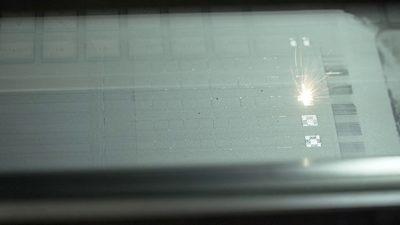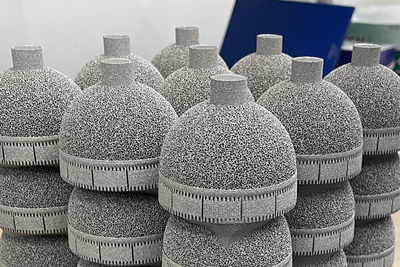Share




What does it mean for a machine shop to adopt laser powder bed fusion (LPBF) or electron beam melting (EBM) additive manufacturing? What are the considerations? The half-day AM Workshop on Powder Bed Fusion at IMTS will prepare machine shops and other established manufacturers to succeed with these methods of metal 3D printing. Learn more and register here.
LPBF is likely the best-established and most widely used industrial 3D printing process for metal part production. EBM is a related powder bed fusion process that expands the envelope of capability. Both metal AM processes allow for radical design possibilities, including topology optimized forms and parts with complex internal features. They also allow for radical time savings by replacing casting in some cases, and replacing assembly in others thanks to part consolidation. However, the powder bed fusion processes also introduce engineering, qualification and material handling requirements unlike those familiar to many shops.
The build area of a laser powder bed fusion machine determines not just the size of a single part that can be printed, but also the quantity of a run of smaller parts that can be produced in one cycle. Source: Nikon SLM Solutions
This year’s International Manufacturing Technology Show (IMTS) will offer a chance to spend a half-day hearing from experts who can describe what is important to understand about powder bed fusion processes. The AM Workshop on Powder Bed Fusion is for manufacturers who recognize the power and value of LPBF or EBM well enough that they are seriously considering adopting the capability or working with a metal AM provider. That is, shops that recognize what the capability can do and how far it might take them, but still need the tactics for success that will let them win with powder bed fusion more quickly.
The topics and speakers for the half-day workshop include:
Programming and Build Preparation
Success in LPBF is the result of a host of complex choices that come before the build begins, and many of these choices can be automated. Dr. Michael Head from Dyndrite describes build parameters and other considerations of build setup, and how they affect the speed of 3D printing and the quality of the printed part.
Process Qualification

Laser powder bed fusion success involves consideration of postprocess machining. Source: Keselowski Advanced Manufacturing
The U.S. Navy has detailed process qualification frameworks for powder bed fusion for its Submarine Industrial Base, and Keselowski Advanced Manufacturing pursued the infrastructure and quality system advances needed for LPBF on its EOS machines to meet the Navy’s requirements. James O’Toole of Keselowski Advanced Manufacturing and Dr. Ankit Saharan of EOS discuss this.
Hardware and Software Integration
Software is an enabling tool for LPBF every bit as much as the hardware. Matt Karesh of Velo3D describes software’s increasingly important role in LPBF and how hardware and software integration contribute to repeatability, with examples of success from various AM part producers.
Part Removal
After an intricate, high-value part has been successfully 3D printed, the process is far from complete. Clay Olson of EDM Performance Accessories describes the economics of removing the part from the build plate, and how to carry out this step safely, quickly and efficiently.
Scaling Up Production
Large-format LPBF machines are powerful not just for large parts, but for large quantities of smaller parts. Brad Lemke of Nikon SLM Solutions discusses how LPBF on larger-scale machines is transforming serial production.
Another Option: Electron Beam Powder Bed Fusion
EBM, also called electron beam powder bed fusion, provides options for fast build speed, streamlined manufacturing steps and potentially superior mechanical and material properties. Jonathan Buckley of JEOL USA will discuss the fundamentals, workflow and application of EBM.
To join us at the AM Workshop on Powder Bed Fusion, REGISTER HERE.
Read Next
Top 10 Additive Manufacturing Stories of 2023
Laser powder bed fusion, proprietary AM processes, machining and more made our list of top 10 articles and videos by pageviews this year.
Read MoreVideo: What Is Laser Powder Bed Fusion (LPBF)?
Laser powder bed fusion is likely the most widely used metal additive manufacturing process. Here is how it works, including benefits, issues to consider and applications for this 3D printing technology.
Read MoreVideo: What Is Electron Beam Melting (EBM)?
Electron beam melting is the higher-energy metal 3D printing process offering advantages when it comes to productivity and thermal stresses. Here is an introduction to EBM.
Read More




















.jpg;maxWidth=300;quality=90)












